USER REPORT: Olympus OM-D E-M5 for Landscape Astrophotography
by Jensen Chan
Hi Steve and Brandon. First of all happy 2014 to you (and all the readers out there too)! SteveHuff.com has grown tremendously and as an avid reader I’d like to say big congratulations on how far the website has come and how you’ve been able to truly pursue your passion. It must have been a fantastic journey for you, and it has been a true joy for me reading all the wonderful articles and thoughts. I will surely be frequenting your website for many, many more posts to come!
Much of the recent posts coming through your website feed have been beautifully showcasing lifestyle/portraiture photography and new camera gear. What with the Olympus OM-D E-M1, Sony A7/A7r and Nikon Df taking centre stage, 2013 was an exciting year indeed. Today I’d like to offer a “mini-flashback” to the humble Olympus E-M5 and share my emotions and work from this extraordinary piece. The Olympus OM-D E-M5, while not the newest toy in the neighbourhood anymore, is the first camera that truly inspired me to appreciate beauty around me like never before.
The E-M5 is the first camera that I bought for myself (thanks to your overwhelmingly positive review Steve!), and I have to say that the experience of getting this camera is akin to the classic story of meeting that mesmerizing lady in the bookstore. You see her at the counter through the window of the store. Her beauty catches your eye so you take the step into the store. So enchantingly beautiful, but yet you’re shy that you couldn’t walk up to her. Rather, you walk around the store pretending to do something else and occasionally take a gaze at her, listening to the guys around talking about her. After a good half hour you take a deep breath, suck in your belly and walk up to the store man and see if you could be introduced to her. He happily brings her in front of you, and as you meet eye to eye for the first time, you connect immediately. Your minds click, conversation flows and every thought and emotion she shares with you is mesmerising and out of this world. She clearly has a wild heart. She yearns to see the world and she has you just as captivated as her to do the same.
Long story short I said goodbye to her that day, read Steve’s review that night, and next thing I knew, I now have her with me as a travel companion. I cannot imagine my travels any other way without this little gem.
Having the E-M5 on my desk begging to be taken out for a trip, I spend every weekday at work eagerly waiting for the weekend so I could go out somewhere in the wilderness to take in all the beautiful scenery Australia and beyond had to offer. I yearned to go out. I couldn’t wait to hold the beautiful E-M5, especially when paired with the 12mm f2.0 or the 75mm f1.8 lenses.
What started as daytime scenery photo shooting slowly evolved towards sunrise and sunset sessions as they were the most beautiful times of the day. As I went more towards the extremities of daylight hours, I eventually fell in love with taking night sky shots. Here’s what the camera can do in a dark sky.
The E-M5, my friends, is a camera as powerful as it is beautiful. Steve has covered a lot of its functions and powers here. Needless to say it is a camera that is capable of doing bucketloads of things. What I think many E-M5 owners have not realised, however, and that many reviewers do not mention, is the sheer amount of detail this sensor can take in when capturing in RAW format. If you were to take these photos in out of camera JPEG you may be disappointed by its capabilities, but the true power is in its RAW files. The sheer number of stars, tiny to the tiniest of pin pricks, can be captured by the sensor, even for stars that may be invisible to the naked eye. It might not show much in its JPEG photos, but with the RAW files given some tickling and massaging in softwares like Lightroom, the results can be astounding, all in shots that last between 15 to 45 seconds!
Gear-wise, I don’t use much. I mainly use just the camera and a light hand-me-down tripod from my dad. No remote control, no star tracker. A simple combination of gear can be minimal but powerful, and it’s precisely the form factor of the E-M5 that inspires me to explore and not be weighed down by bulk. People who travel a lot with their SLRs, lenses and tripods will know very well! The E-M5 is by no means the best camera to capture night sky shots (which I will explain later). There are cameras with better sensors, better noise control, and with wider and faster lenses. But the best cameras for the job would cost a ton, weigh a ton and would not have inspired me to go to places like the E-M5 did. To go to these secluded places dark enough for night sky shots, you’ll need to fill your bag with food and water supplies, warm clothing, flashlights, your camping gear IN ADDITION TO your regular camera gear. As the saying goes, the best camera is the one you have with you. If I had any of the SLRs instead of a smaller one like the E-M5, it’s not that I won’t have the camera with me in the wilderness. I wouldn’t even BE in the wilderness!
The E-M5 is not without its shortcomings, however. The more I shot the more apparent the weaknesses of the E-M5 became. For one, the noise levels from the sensor gets unbearable at high ISOs, even starting form ISO 640 onwards. Noise grains will start competing with the stars and the photo becomes as busy as a flea market. I have to always keep it below ISO 800, and preferably below ISO 400, which puts the camera at a significant disadvantage. With low ISO you need longer exposure times to compensate, and if exposure times are too long, you start having star trails which is not what I’m after. I can compensate with a star tracker on my tripod, but this will add weight, and the interest at this point is to take both sky and landscape together.
Second problem is that there isn’t a wide enough/fast enough lens available in the micro four thirds category for landscape astrophotography. It’s a niche market I know, but the 12mm f2.0 is the only lens that is wide enough and fast enough for this use. I can’t help but wish for something wider and just as fast, if not faster. This brings us to the third problem, the 12mm f2.0 lens. In manual focus mode when you bring the dial to infinity, IT’S NOT ACTUALLY INFINITY. It actually goes past infinity and you’ll realise that the stars becomes out of focus. You have to bring it back a notch until the red line points between the infinity mark and 3m mark for it to be truly infinity. Moving the camera constantly in pitch darkness makes life a little fiddly having to check the focus ring every single time before I press the shutter.
But given the current capability of the E-M5, I am extremely happy with it If I had the money to spare, would I get another camera system to take better landscape astrophotography photos? I’m not sure. Beyond imaging capability, a camera also has to give you inspiration, an intangible pull, to go out and do the things you normally don’t have the motivation for. The E-M5 did just that. Sure it may struggle a bit under extreme conditions, but this is the camera that first brought me out to the beautiful world to enjoy. It’s a camera that made me want to trek my way for kilometres to the darkest areas and reach the best views I could find, and spend hours under the stars enjoying how majestic this world (and universe) could be. By giving it the right attention and right conditions, it’s a camera that can undoubtedly thrive and I cannot imagine doing this with another camera.
Back in September Olympus Australia ran a small competition for OM-D lovers to make videos to show why they love their OM-Ds. Made one myself in my bedroom with nothing but a flashlight for lighting. This video didn’t win me anything but it’s a piece of work that shows my love for this camera. Hope it resonates with some of you too.

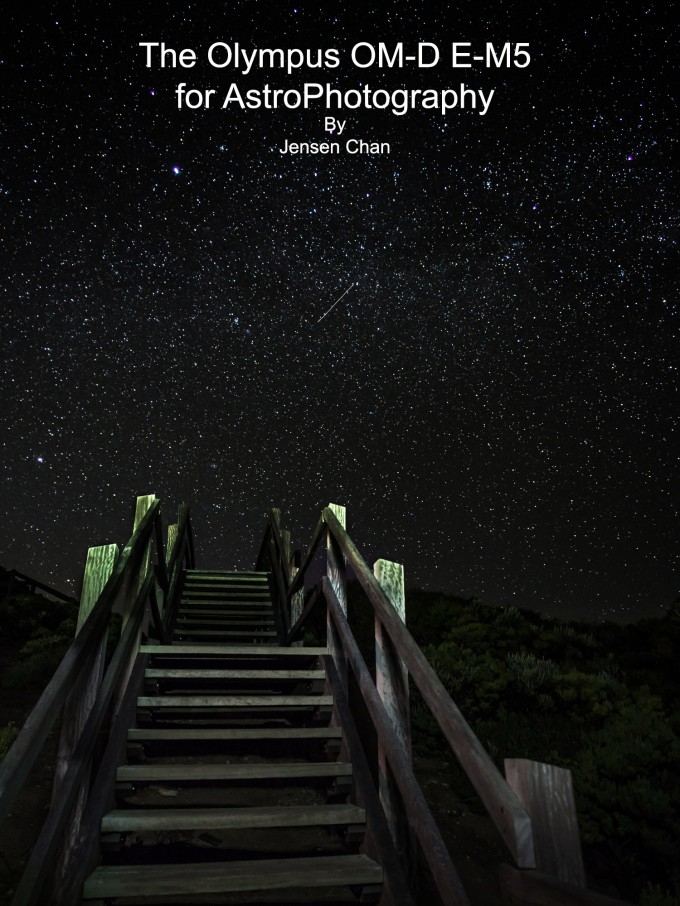
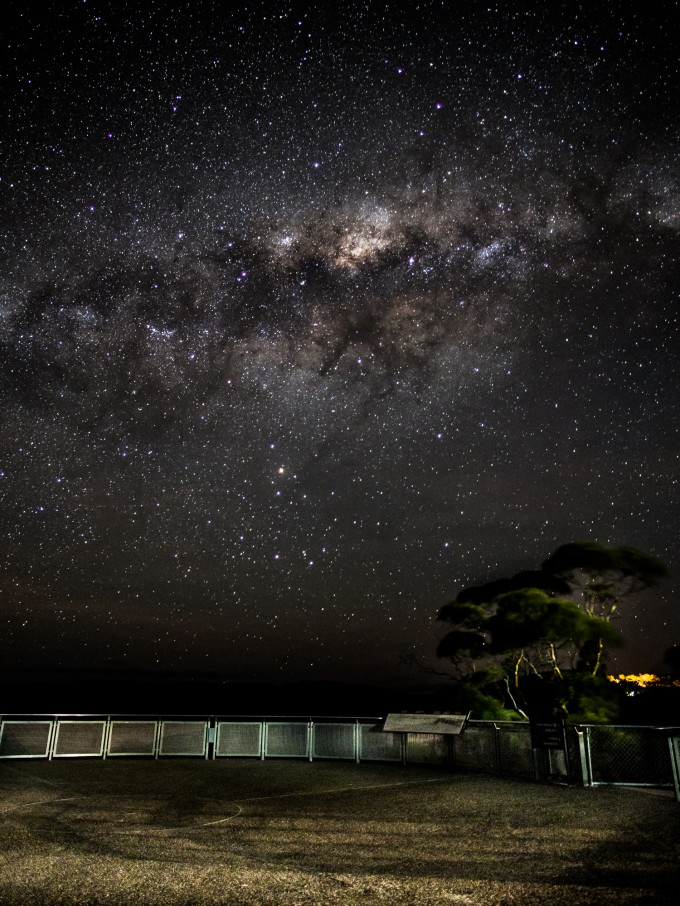
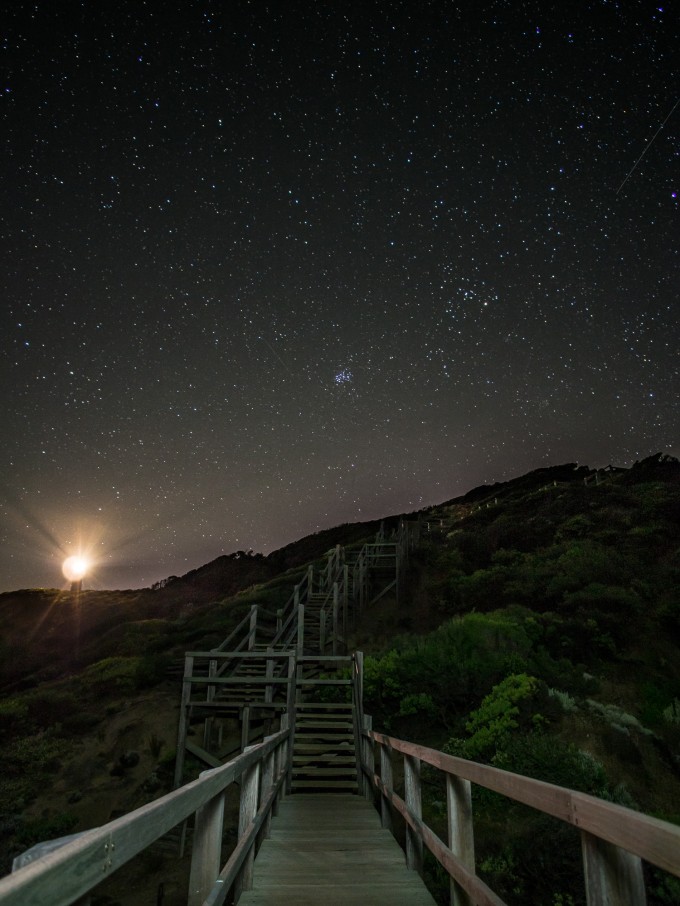
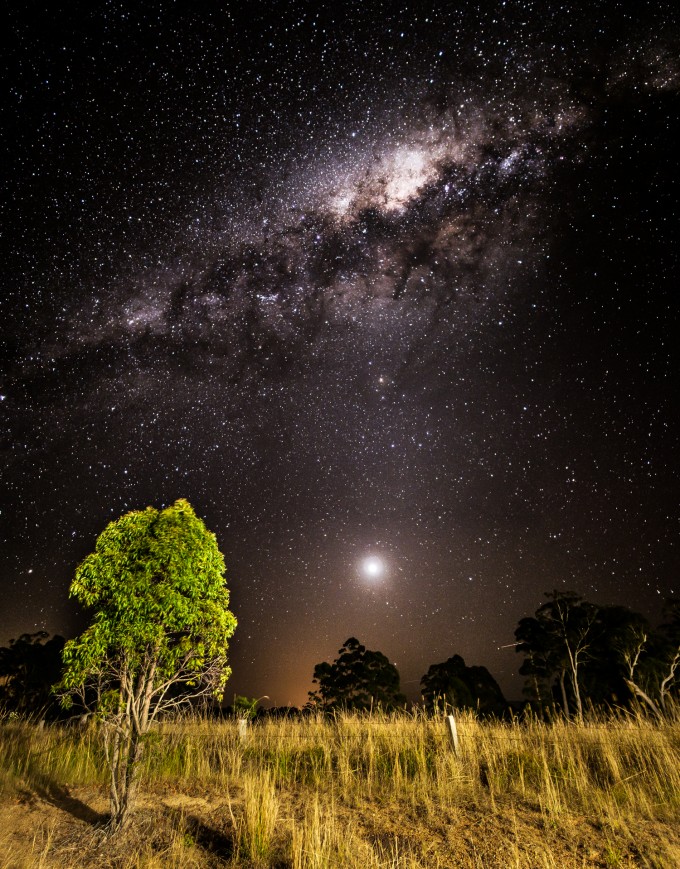
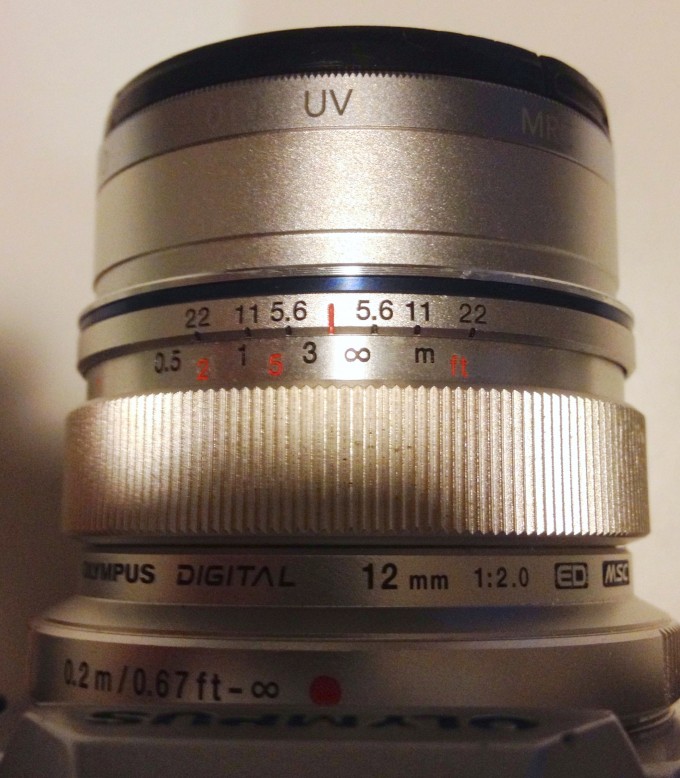
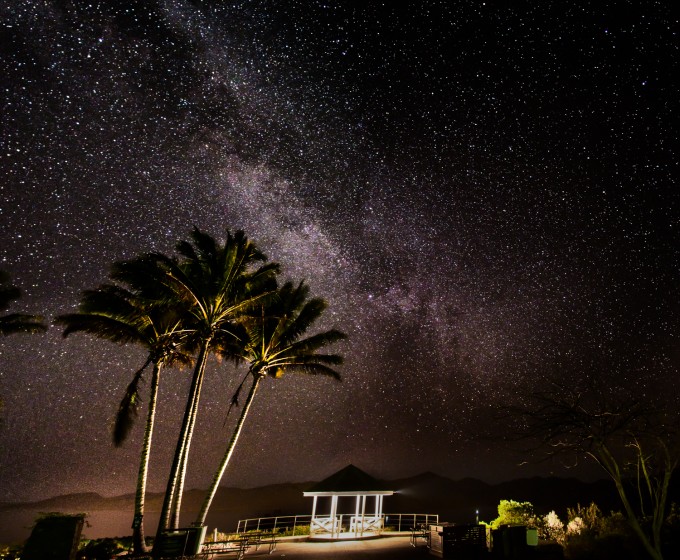

To whoever asked about print sizes, Imaging resource include a section in their reviews giving some idea of print output quality. Hope it’s ok to post the link, apologies if not!
http://www.imaging-resource.com/PRODS/omd-em5/omd-em5A5.HTM
Brilliant article and photos btw!
Manual is the way to go. With night sky shots you have to take full control over everything in the camera and not let it decide what to do (which it fill fail miserably), unless it’s the Sony A7s as Steve explains!
I tried some night shots with my 3 day old OM D EM-1 – very disappointed that it had a hard time focusing – should I be focusing manually?
Only one camera I have ever used will focus in very low light, the Sony A7s and A7sII. Any other camera will hunt in low light, also greatly depends on the lens you are using as well.
hello Jensen, thansk for all. Did you shot all photographs with the described 12 mm f2 ?
What about the using of 75mm f1.8 for astrophotography ?. Thanks for reply
I tried it once but never got it to work well enough, as it doesn’t have a distance scale. Focusing is a nightmare with many trials and errors. The longer focal length also means you need a faster shutter speed to avoid star trails, which makes the photo dimmer and harder to edit.
All in all, I love the lens, but it’s not the right lens for this application =)
It’s July 2015 – And still, I refuse to upgrade my cameras to any of the new models. I just ordered a second OMD EM5 for pennies on the dollar. The OMD still beats the EM5 Mark II and the EM1 for low light astrophotography. As far as I’m concerned these cameras are hard to beat at the current price point and I am a professional photographer. Yes, they may not be a Sony or a Canon, but they are more than adequate for Micro Four Thirds and most photographers like me. Paired with the Olympus 75mm or the Nocticron (like I have) – These are formidable cameras not to be underestimated.
Nice post, thanks for sharing. My first experience with my EM-5 and astrophotography yielded poor results, that’s because I was using ISO 3200! So much noise the photos weren’t worth keeping. I’ll have to use my fastest lens and keep the ISO below 800 next time I go out to try for better results. Thanks for sharing, your post was very useful
Looks like you are about to embark on an incredible journey, Will. Have bookmarked your blog and looking forward to the fantastic experience and photos! I’m open for a cup for coffee if you happen to pass by Melbourne, Australia!
I have some photos on my website http://www.jensenchan.com. Feel free to take a browse for some ideas for yourself, and happy journeys ahead!
Hello!
Nice Photos.
I’ve been doing some Aurora photography, but my problem has been that I cant see any thing threw the evf or the LCD. Du you have any settings recommendation that can improve this?
Hello Trond. Yeah that’s an issue with taking night sky shots isn’t it. I had to take wild guesses on what the best composition is and take a blind long-exposure shot from an angle that I think is a good one. When the shot is done you can review on your screen to see if it’s the right angle/composition etc. It usually takes me about 5 shots to get the angle/composition I want, or really to reach a conclusion that where I’m placing the tripod is not a right place and I should move to another spot!
Great photos and i love the way sir jensen described it like a beautiful lady! 🙂 Very inspiring camera indeed… i do not own an em5(yet), but i really really wanted one for i cannot shoot with my slr in street freely with its bulk and thief friendly appearance… I’m just a newbie wedding photographer and thinking of a different approach than the normal trend of using a dslr in events, and also i want to go out and shoot freely with less weight and more comfort.. Just one question though, what is the difference between the dimension that its raw file produce compared to aps-c and ff sized sensors? and how big can it be printed? thanks.. Happy clicking! :3
Thank you Noel, and congrats on the foray into wedding photography! I’ve been shooting a few weddings (not as a primary photographer) recently, and boy is it different to taking landscape and stars (stars don’t move that much for one). I won’t be able to answer your questions to great detail as I’ve only primarily used micro four thirds sensors, though I can only say that even it has a smaller sensor, it has way more pixels (~4600×3400) than the older Pentax K100 with an APS-C sensor (~3000×2000) I used to use. Was suggested to a link below some time ago about print quality versus megapixels, but I’m led to believe though that print quality is dependent on pixel quality rather than just pixel count alone, so a smaller megapixel count ff sensor may be able to print a larger print than a high megapixel MFT sensor.
Not a definitive answer but I hope it helps! We’ll have to print it out to find out. If you never try, you’ll never know for sure.
http://www.bhphotovideo.com/FrameWork/charts/resolutionChartPopup.html
Brilliant pictures. Nice video for the OMD too. I feel the same for my own EM-5 as you do, but sadly I haven’t put it to such a good use as you have (yet). Bravo!
Benny
Great photos, Jensen! Loved the VDO too!
beautiful night sky shots, great idea… thanks!
Very nice pictures!
Yes M43, big lens selection, but only a few useful ones. I’m doing these kind of shots on a Sony A7r and previously on the NEX-7, the camera that inspired me like thenEM-5 did for you. I get nice results on both cameras with the Zeiss Touit 12mm 2.8 which is sharp wide open across the frame for star photography. On the A7r usable up to ISO 6400 and in NEX-7 up to 1600. It’s a very nice kind of photography, something to slow down and enjoy the quite and cool night
Hey Jensen, habe you considered the samyang/rokinon/whatsoever 7.5mm f3.5 mft Lena. Though being 2/3 stops slower than the 12mm, it is said too be a real bargain and of good quality too. Amazing shots by the way 😉
Beautiful Work!
Beautiful work, that speaks of a passion !
Very nice! did you do anything special to light the foreground in the images (like the tree and fence and moon ) ?
The video is great – did you really spray the camera with water for the shot ? crazy.
I’d suggest gaffer tape to hold the manual focus at infinity
That was a really beautiful series. Not only does it have the “wow” factor of the stars, but the compositions themselves were masterful (particularly enjoyed the ones with the platforms and stairs).
You are very talented. THANK YOU!
Thanks for sharing Jensen! I am impressed and inspired in the same time. I used to have an E-M5, which I later replaced with E-M1 and sometimes I experiment with night photography. But I am falling short in the post processing I guess. I was never able to bring out so much sharp detail while suppressing the noise that eventauly shows up.
Do you mind sharing the typical settings you usually apply in Lightroom, e.g. WB, Shadows, Highlights, Clarity, Contrast, Curves, etc?
Thanks!
Really nicely done!
Wow!
Well done!
*make these images
Amazing images! How did you make this images without a star tracker?
nice work. a great reminder and inspiration to give us something we may not have thought quite possible before.
Brilliant article. The OMD EM5 was my first proper camera and got me into photography as a serious hobby. I now have the EM1 but, regret selling the EM5……..there’s just something about it.
Love your pictures……….the best on here for a while!
Fantastic photos, Jensen. Some people own very expensive equipment do not mean they can produce extraordinary pictures. It is only for those who have decent equipment with extraordinary imagination and patience.
Love them, love them all. Also really liked the video. Was inspiring!
Incredible photos!
Hi Jensen, your photos are simply stunning, thanks for sharing. As for the E-M5, I totally agree, this is the only camera I love, I think of it more as a companion that inspires me to take photos.
Wow – simply wow! Once again, the gear matters only this much – it’s all about the vision. Excellent work Jensen. Did you also use minimalist light sources to illuminate the foreground? I am just dumbstruck by 1 and 4!! You are squeezing every inch out of your gear and that’s what matters
Thank you very much Arindam. You have a sharp eye, photos 1 and 3 has a little assistance from my iphone flashlight. The others are made visible by moonlight/lighthouse light/nearby street light.
Awesome work. Beautiful shots!
I have no words, these images are simply fantastic!
Amazing photographs. Do you think EM-1 can perform little better in astrophotography ?
I have had the EM5 for a little over a year now and the EM1 for several months, unfortunately there is no improvement with the EM1. Side by side with the same lenses, the images will be absolutely identical up until you start pixel peeping like a mad man, which is something I have yet to do so I can’t speak for it.
I recently took my EM1 out for a time lapse series to capture a meteor storm that was happening one evening. I was unaware of the noise issues these cameras have with long exposures and high ISOs and was shooting 20 sec. exposures @ ISO 3200 using the 12-40 F2.8 @12mm and F2.8. The resulting photos were unusable due to the massive amount of noise.
When researching the issue, many said that turning the noise filter on would prevent most of the noise. This would be great if it didn’t double the write to card time. Turning the filter on made my 20 second exposure take 20 seconds to write to the card (in RAW). This is completely unacceptable for shooting time lapse and from what I read is attributed to the sensor that can’t be fixed via firmware update.
I spent a lot of money on this camera and new lenses and even though I love the camera I’m very unhappy about the horrible performance for this type of photography especially when you see Olympus advertising these cameras for Astrophotography.
Being new to Astrophotography I don’t know all the ins and outs so maybe there is a work around for this?
Hi Jeff,
I know this is a really old post so you might not see this, but there actually is a workaround to this delay.
The reason the camera takes twice as long to do noise reduction is because it replicates your exposure but with the shutter closed the entire time, it just allows the sensor to accumulate noise for the same amount of time as your exposure. It then subtracts this exposure from the actual photo.
You can do this manually by taking a photo with your exposure time and ISO and the lens cap on. You can then do manual noise reduction by subtracting this exposure from your resulting images in Photoshop, instead of forcing the camera to do it every time you take a photo.
Thanks Wes,
I haven’t tried Astrophotography since I posted that above due to my frustration with the results so I’d have to dig into the camera’s menu system to turn off the automatic noise reduction if I were to try again.
I had thought about playing with the Live Comp feature of the camera but haven’t had the chance for that yet either.
Eventually I’ll find a subject compelling enough to make me want to try again and I’ll try your method.
Truly beautiful Images. Thanks Jensen.
Just awesome Jensen! Not a genre I have ever tried but these images are truly inspirational! Keep up the good work. BMW couldn’t get the YouTube link to work. 🙂
Brilliant, Jensen. Night sky photography was the final frontier for me and my EM5, and I haven’t attempted it on this camera yet, but your excellent post has reassured me, despite the camera (and lenses’) shortcomings. And I whole-heartedly agree with you about the RAW files. Wouldn’t shoot anything else 🙂
Thanks for your post and photos.
Warm Regards,
AW.
Your images are extraordinary. Thanks for sharing and showing what can be done.
WOW!